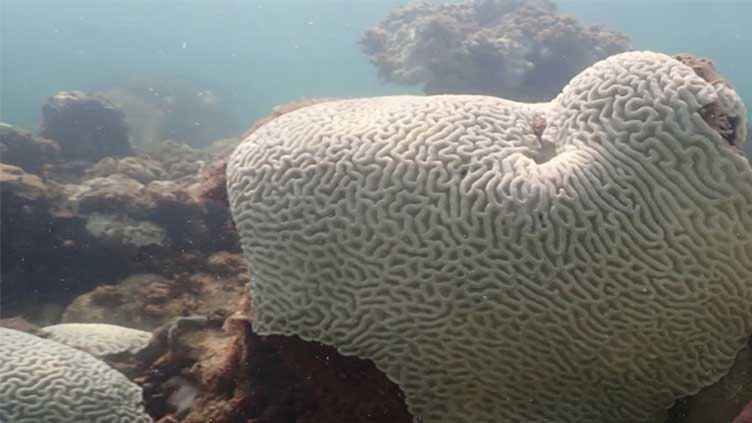Scientists say coral reefs around the world are experiencing mass bleaching in warming oceans

World
Scientists say coral reefs around the world are experiencing mass bleaching in warming oceans
NEW YORK (AP) - Coral reefs around the world are experiencing global bleaching for the fourth time, top reef scientists declared Monday, a result of warming ocean waters amid human-caused climate change.
Coral reef bleaching across at least 53 countries, territories or local economies has been confirmed from February 2023 to now, scientists from the National Oceanic and Atmospheric Administration and International Coral Reef Initiative said. It happens when stressed coral expel the algae that are their food source and give them their color. If the bleaching is severe and long-lasting, the coral can die.
Coral reefs are important ecosystems that sustain underwater life, protect biodiversity and slow erosion. They also support local economies through tourism.
Bleaching has been happening in various regions for some time. In the world’s largest coral reef ecosystem, Australia’s Great Barrier Reef, bleaching affected 90% of the coral assessed in 2022. The Florida Coral Reef, the third-largest, experienced significant bleaching last year.
But in order for bleaching to be declared on a global scale, significant bleaching had to be documented within each of the major ocean basins, including the Atlantic, Pacific, and Indian oceans, in both the Northern and Southern Hemispheres.
This year’s bleaching follows the declaration that 2023 was the hottest year on record.
“As the world’s oceans continue to warm, coral bleaching is becoming more frequent and severe,” Derek Manzello, NOAA Coral Reef Watch coordinator, said in a statement.
One reef that fared better than others last year was the Flower Garden Banks National Marine Sanctuary, which was afforded some protection by its location in deeper water in the Gulf of Mexico about 100 miles off the Texas coast. Sanctuary officials didn’t immediately respond to messages Monday seeking the latest on the health of the sanctuary’s corals.


